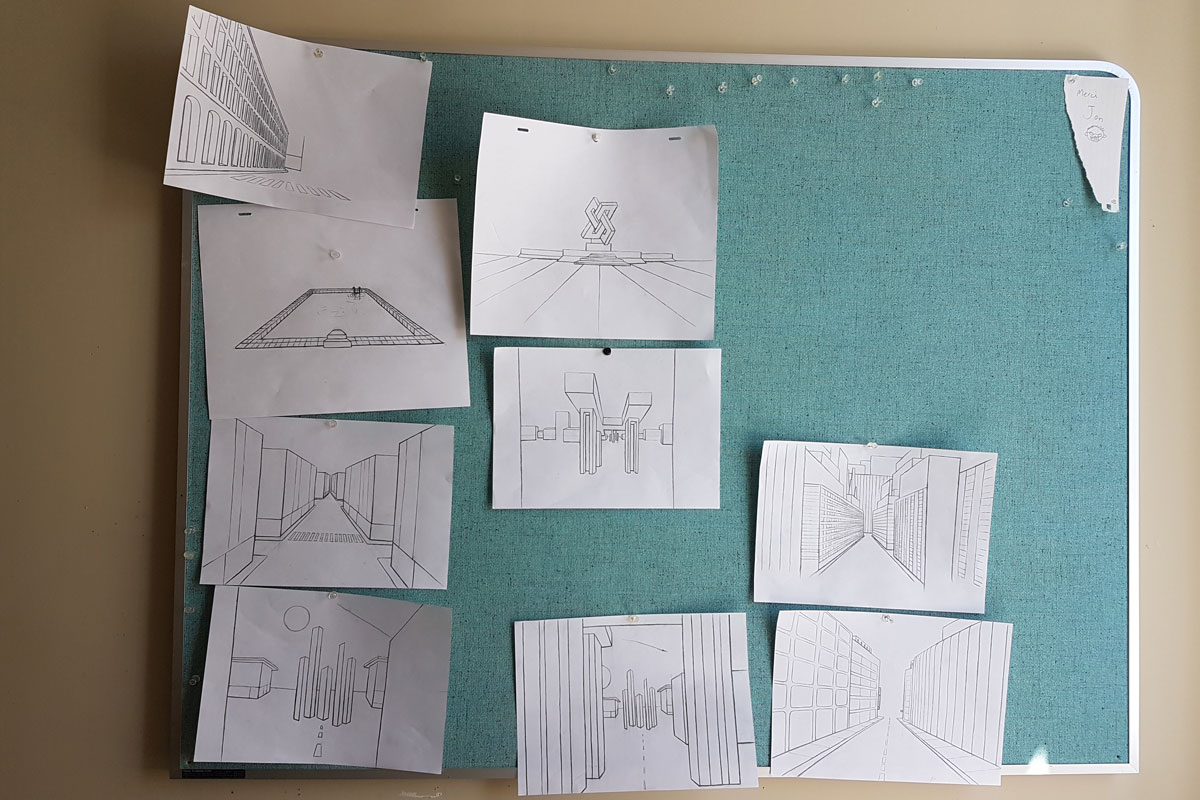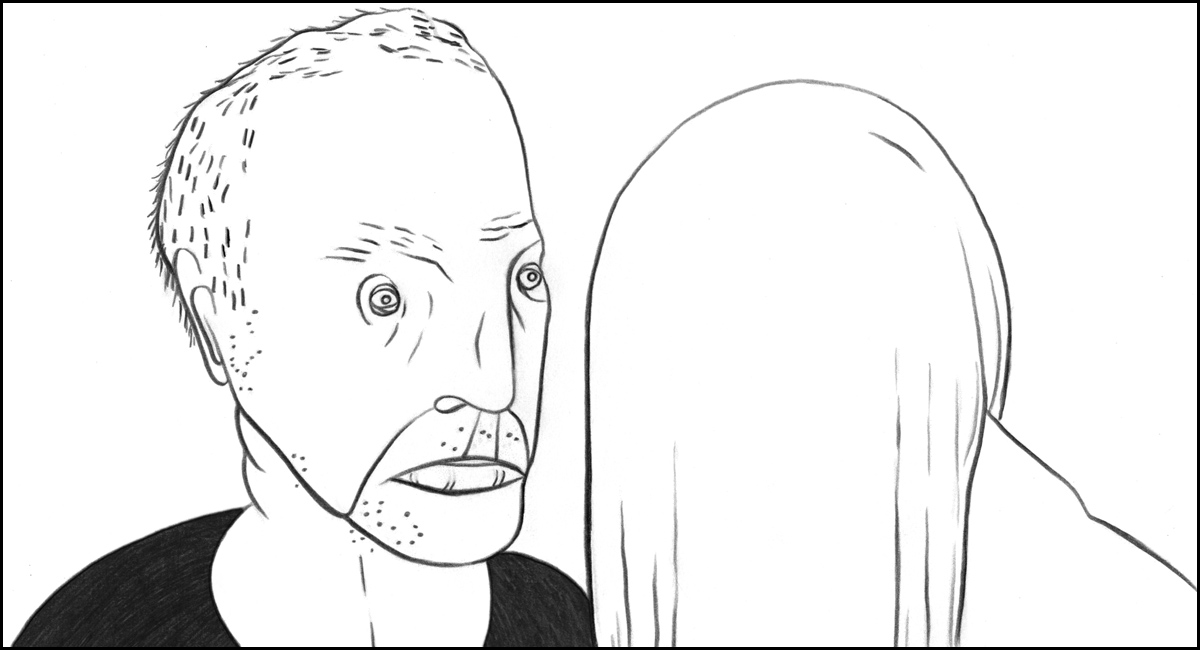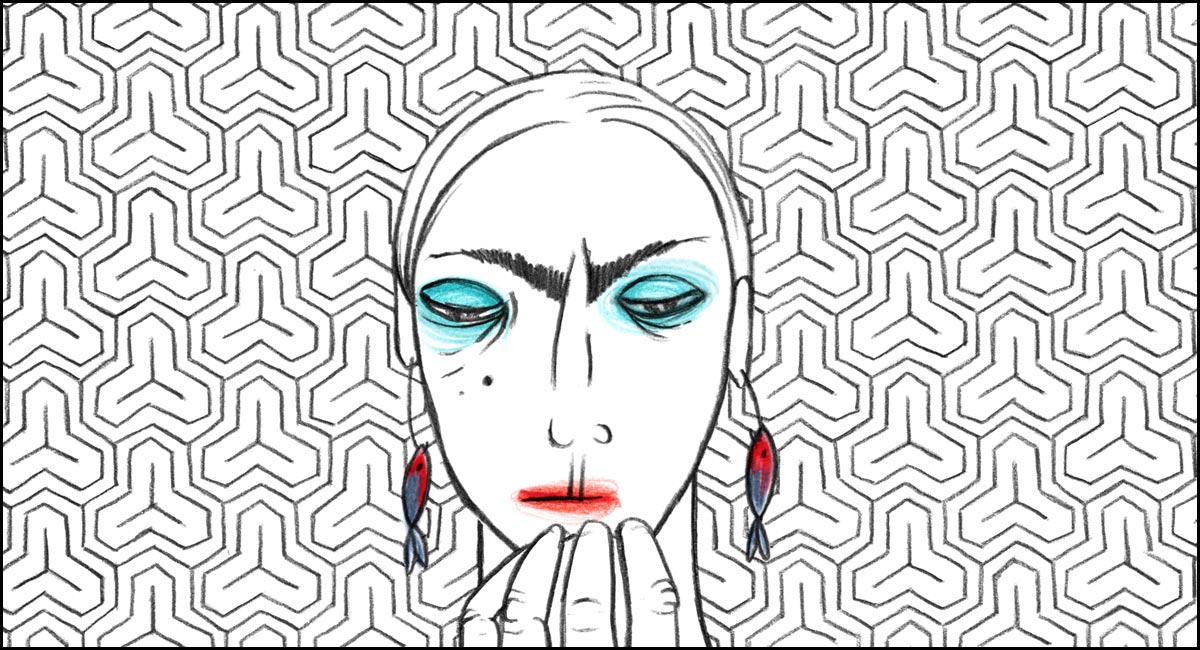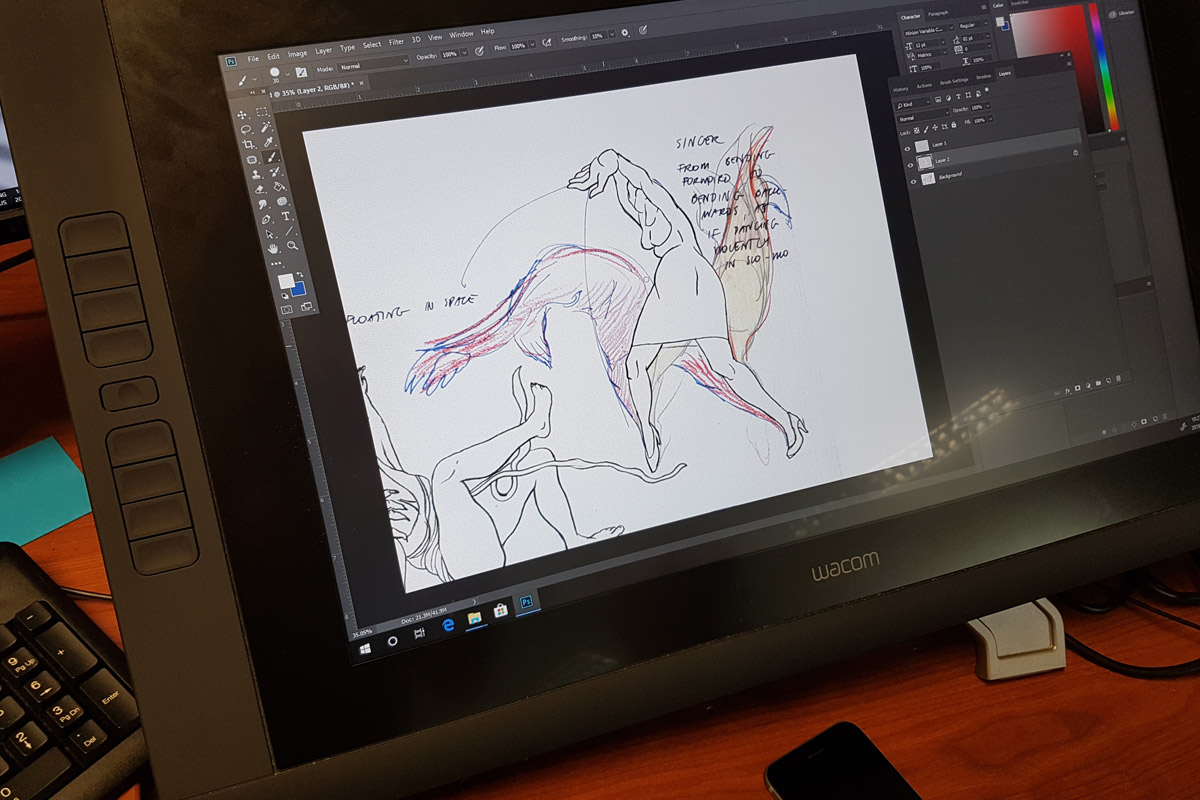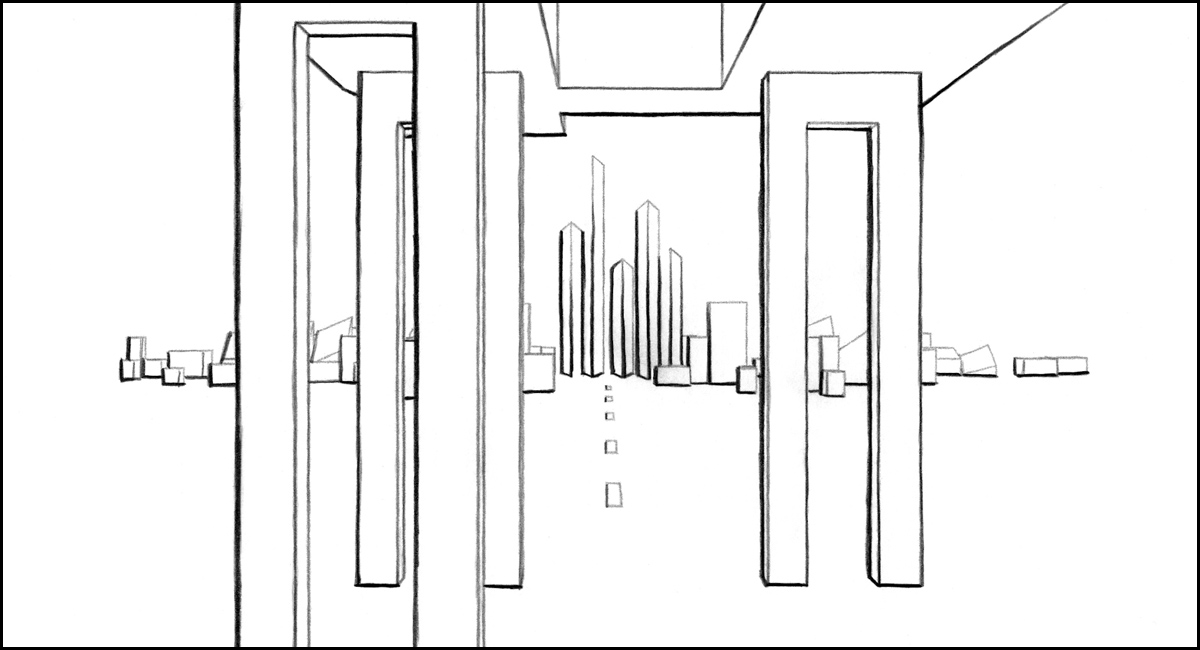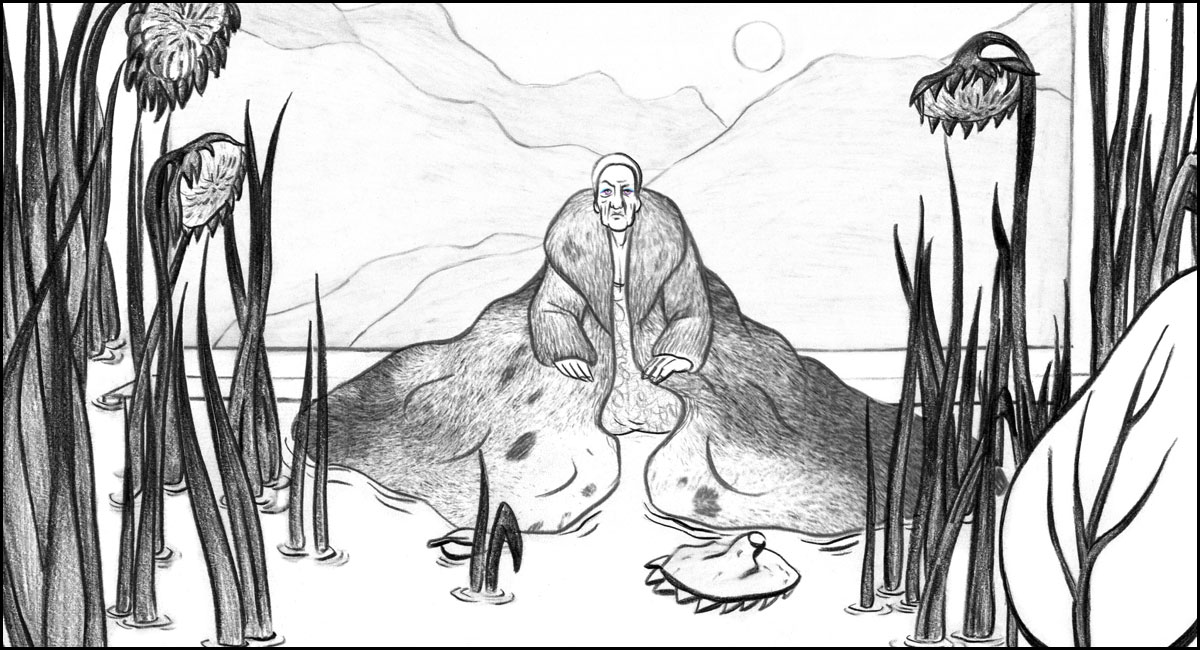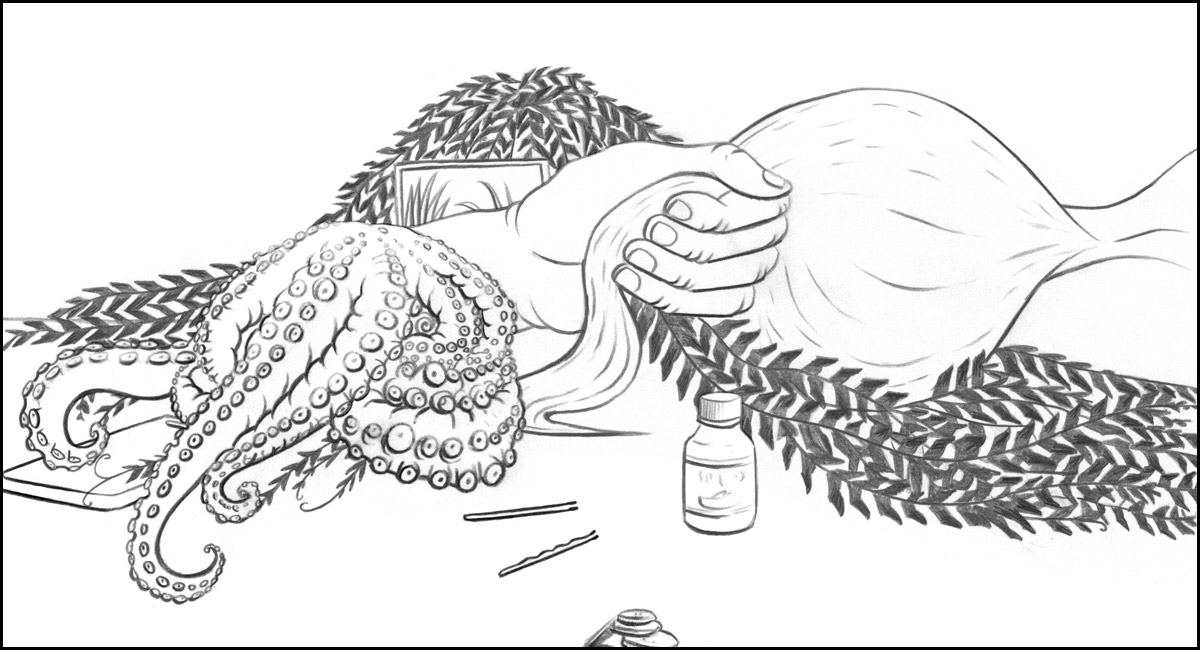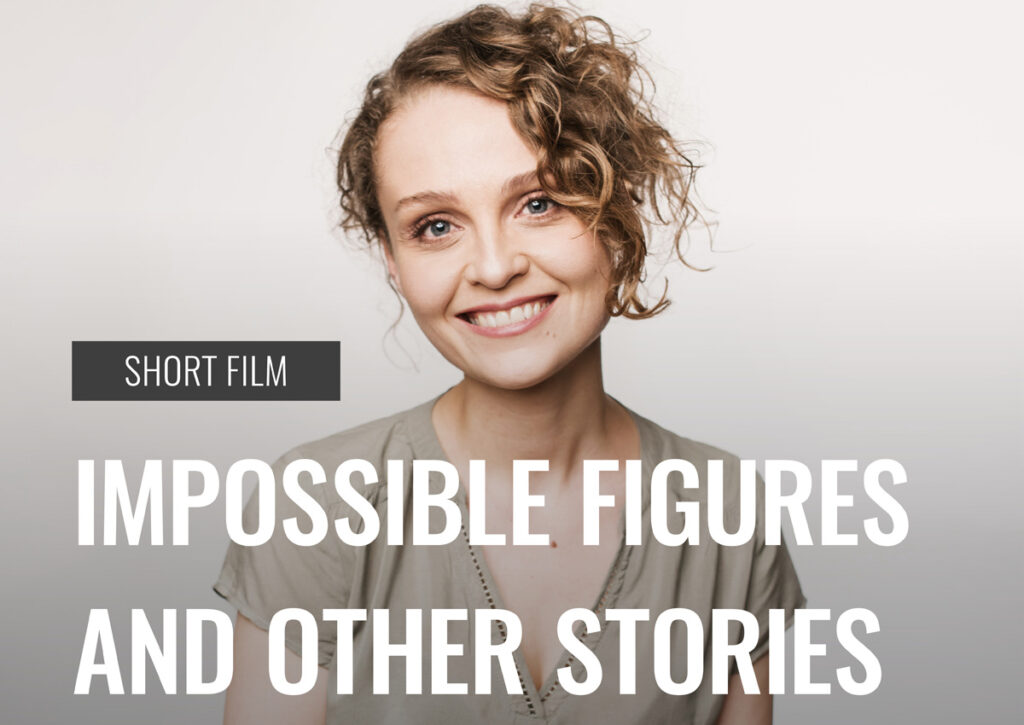
The Impossible Figures and Other Stories trilogy are multi-award-winning short films directed by Polish-born animation creator Marta Pajek. The first film of the trilogy, Impossible Figures and Other Stories II released in 2016, brought Marta an international reputation as one of the most gifted animation creators of her generation.
The trilogy has been selected for more than 40 awards internationally so far, including the Grand Prix at Glas Animation, the Grand Prix at Stuttgart International Festival of Animated Film, a special mention at Animafest Zagreb, and the Best Design award at Ottawa international animation film festival.
The trilogy shows the mysterious internal stories of three women in three different scenarios of their interpersonal relationships, and their emotions twine around the audience through instinctive and insightful visual expressions. All three films are the embodiments of the strength of animation as a visual storytelling medium, by visually expressing the invisible and intangible nature of the human subjective experience.
As the trilogy was completed with the release of Impossible Figures and Other Stories I last September, we caught up with Marta to find out what went into making the trilogy and what her thoughts are on the films. We would like to deliver to you a lengthy interview with Marta, so you can watch the trilogy with great insight.
Impossible Figures and Other Stories II (2016)
Film Credits
Director / Author / Art Designer: Marta Pajek
Music Design: Aleksandra Gryka
Producers: Kuba Karwowski (executive producer), Piotr Szczepanowicz and Grzegorz Wacławek
Production: Animoon (Poland)
Production Manager: Zofia Jaroszuk
Technique: 2D animation
Format: 15 min
Synopsis
The film portrays a story of a woman, who keeps on stumbling and falling in her daily rush. When she gets up, she discovers her house has quite unexpected attributes – it’s built from paradoxes and filled with illusions.
III (2018)
Film Credits
Director / Author / Art Designer: Marta Pajek
Music Design: Aleksandra Gryka
Sound Design: Michał Jankowski
Producers: Piotr Szczepanowicz and Grzegorz Wacławek
Production: Animoon (Poland)
Production Manager: Zofia Jaroszuk
Technique: 2D animation
Format: 12 min
Synopsis
A Man and a Woman meet in a waiting room and immediately get closer to each other. They commence a game that gradually gets more and more ferocious. Their faces resemble masks while shapes slowly lose their integrity. Bodies are formed like clay, embracing each other until the limits of impossibility. „III” is a portrait of a woman in an exhausting relationship with a man, which allures and repulses at the same time.
Impossible Figures and Other Stories I (2021)
Film Credits
Director / Author / Art Designer: Marta Pajek
Music Design: Aleksandra Gryka
Sound Design: Michał Jankowski
Producers: Piotr Szczepanowicz, Grzegorz Wacławek and Maral Mohammadian
Production: Animoon (Poland)
Co-production: National Film Board of Canada (NFB)
Production Manager: Zofia Jaroszuk
Technique: 2D animation
Format: 16 min
Synopsis
An ominous ticking sound triggers a massive explosion. A swarm of objects and figures scatters unforgivably. In the aftermath, only a few souls remain, including an elegant elderly woman. Wandering deserted city streets, the tired, stoic woman painfully recalls what was and what could have been. As a flood slowly swallows the city, she shares a final moment of grieving beauty.
Interview with Marta Pajek
Story of the trilogy
Hideki Nagaishi (HN): I would like to hear about the making of the trilogy. How did you set up the project and how did you develop a team that made it feasible?
Marta Pajek: The production of the whole triptych spanned 6 years, plus the time necessary for developing the stories. The concept, however, and the general structure of the whole project, was created in one afternoon in my kitchen. I approached Piotr Szczepanowicz (Animoon) with the idea, and Animoon applied for funds from the Polish Film Institute and we started making the films. For each of them the team was a bit different, although several people worked on all of them. I collaborated with 2D and 3D animators and clean-up artists. For part one, which was made last, thanks to Maral Mohammadian and Michael Fukushima we were also joined by a co-producer: the National Film Board of Canada. In this case, the animation was made partly in Montreal, with the NFB team and partly in Poland. During the whole project I collaborated with the polish composer Aleksandra Gryka and sound designer Michał Jankowski, joined for the finale by Olivier Calvert.
HN: Where did the initial idea of the trilogy come from? Did you think of developing three films from the beginning?
Marta Pajek: I wanted to make a film which would go beyond the short film format, but I felt that the film language I use wouldn’t work well in medium or feature length. That’s when I came up with the idea of making a triptych – three animated shorts, each a separate story, but connected by certain ideas and motifs.
I was inspired by the concept of the impossible figure – one which you can draw according to all rules of perspective, but cannot build in an existing three dimensional space. When I came up with the idea, I decided to write all three stories before going into production of any of them. Later, when part II and III were ready, I came back to the script for part I and developed it a bit further.
HN: I would like to hear about your creative process of the three films. How did you develop each film, and from what starting point?
Marta Pajek: The starting point for each of the films was the impossible figure – something, at first glance, simple and clear. However, when you look closer, you start noticing the illusions and paradoxes.
I wanted to tell stories that would resemble such a figure – situations or concepts, which are simple at first sight, show their complicated nature, revealing those illusions and paradoxes which form them.
For each story there was a different space, which together form a kind of box structure – the city, the house and the space between two people. That was the ‘basic kit’ for developing the stories.
HN: What was the most difficult objective in the trilogy project, and how did you achieve that?
Marta Pajek: It was difficult to steer the stories in such a way that they would allow some freedom of interpretation, but at the same time staying powerful and convincing. As for achieving goals, in the end it boils down to the experience of a particular individual in the audience, so it works for one person, but not for another and that’s fine for me.
Messages
HN: What is the main underlining theme that you wanted to deliver through this trilogy? How is each film intertwined to the trilogy’s main theme?
Marta Pajek: I wouldn’t say there’s one particular theme, especially that throughout the triptych we shift from micro to macro scale – from intimate to global. What I wanted all three films to evoke, however, is the feeling of frustration, similar to what one might have when looking at an impossible figure. At the same time, I wanted the films to bring some kind of catharsis. What connects the three films is also a female protagonist, who might be seen as the same woman and the element of nature, which plays a role in all three stories.
HN: What are the independent themes or messages that you wanted to deliver with each film?
Marta Pajek: I don’t like to think about the films as delivering a message. I would rather hope that the audience can recognize themselves or their experiences in the stories and resonate with them. Part III portrays an exhausting relationship between a man and a woman, part II shows a woman’s search for herself through the corridors of her home and part I is a dystopian vision of the end of our civilization.
HN: The three films have received many international awards. What part of your animated films do you think is attractive to animation professionals?
Marta Pajek: I think it would be best to ask animation professionals. But I hope it’s the same thing, that it appeals to non-professionals – I hope the stories resonate with individuals in the audience on a personal level and that they touch them.
Visual creation
HN: Where did the idea of using ‘impossible figures’ come from, and what was your aim with that? And how did you design the scenes with ‘impossible figures’ in each film?
Marta Pajek: The first impulse was to use impossible figures, trying to write stories which would resemble them on a narrative level. With them, however, came other inspirations connected to illusions – M. C. Escher, patterns, anamorphosis. In part I the impossible figure acquires a more symbolic, monumental meaning – it actually appears as a monument in one scene.
HN: Could you please let us know what you took care in the most in the visual design of the characters, and what were your goals with that?
Marta Pajek: My drawing style is quite simple, so the main difficulty in designing the characters was to make them look like individuals – with certain personalities and with imperfections, but at the same time not to go to extremes, to avoid caricature.
HN: Each film has scenes of fast movements in geometrical spaces that gives a strong sense of perspective that pulls me into an endless, surreal space, and it makes me feel like I am confronting those situations with the protagonist. Please let us know your intentions with that, and the creative process behind making those scenes.
Marta Pajek: I’m glad you feel that way – that was indeed my intention! Space is an important factor in the film, it allows creating illusions and playing tricks, which should bring you closer to the protagonist. In some of the scenes I relied heavily on 3D to create camera movement along patterned walls or an anamorphic illusion. In others, however, it was the simplicity of the black and white drawing that allowed cheating the eye and confusing the brain.
HN: I felt that the mysterious and vivid expressions of the physical contacts in the films convey the characters’ raw emotions to the viewer in a strong and intuitive way. How did you develop those visual expressions and what did you take care in the most in the creation of them?
Marta Pajek: I think that sound had an important role to play in this case. Naturally, I tried to make sure, that the animation is simple, but perfectly timed. It is the sound, however, and the work of Michał Jankowski, that adds this extra dimension to it. Michał did sound design for my first professional film, Sleepincord, and we’ve been collaborating ever since. I think it is this sound layer that allows the connection to identifywith the protagonists.
HN: The non-dialogue trilogy uses some abstract visual language as metaphors that leave the understanding of the films to the audience’s individual sensibilities and interpretation. What do you think are the appeals and merits of that animation style?
Marta Pajek: I think this approach allows the audience to resonate with the film on a very personal level. The film is like a structure, or a vessel, which someone in the audience fills with their own experiences, sifting through their own sensibility, so the final experience can be very personal.
HN: In addition to the previous question, it appears that the plants and water in the films are a recurring theme. What are the meanings and symbolism behind that?
Marta Pajek: Nature in general is a strong force in all three stories, but I would like to leave the interpretation of the meanings and symbols to the audience. This is the most inspiring part of filmmaking for me – that my creation is only one part of the story – the other part is what an individual watching the film brings with him to the cinema.
Music
HN: Impossible Figures and Other Stories II uses I’ll Be Your Woman by Michelle Gurevich,
III uses The Garden by Einstürzende Neubauten and Impossible Figures and Other Stories I uses Where Have all the Flowers Gone by Pete Seeger. Could you please let us know the story behind the decision of using those songs in the films?
Marta Pajek: The interesting thing is that I wasn’t planning on the songs on the stage scriptwriting. It started with part II, when I found ‘I’ll be your woman’ by Michelle Gurevich. I was looking for a song for the scene, where we see people dancing at what’s supposed to look like a dying house party. ‘I’ll be your woman’ however brought much more to the film. Using that experience, I was looking for songs which would conclude the remaining two parts in a similar way and bring the stories onto a new level.
HN: The song you selected for Impossible Figures and Other Stories I is performed quite differently from the other two films, as it starts out with the character simply speaking the lyrics of Where Have all the Flowers Gone. What were your aims and intentions with that?
Marta Pajek: Where Have all the Flowers Gone is a very special song, an iconic song. It was performed by many artists, but my favourite version is that of Marlene Dietrich. This version was our reference for the film. The protagonist of the film is an old woman. I wanted her to perform the song as a final gesture. I wanted her singing to be fragile, yet powerful and this last performance of the old woman to bring a light of hope into this otherwise dark vision.




